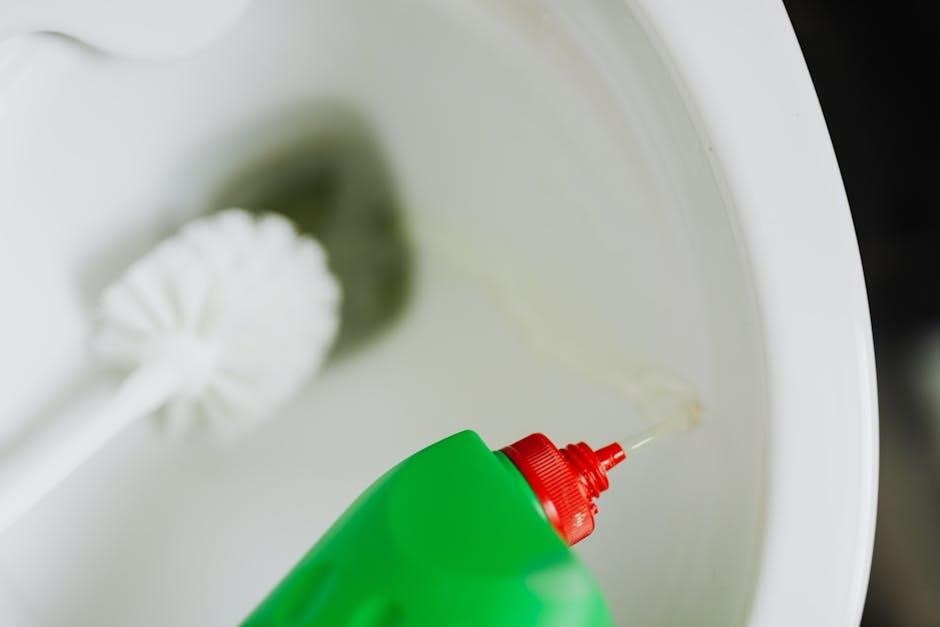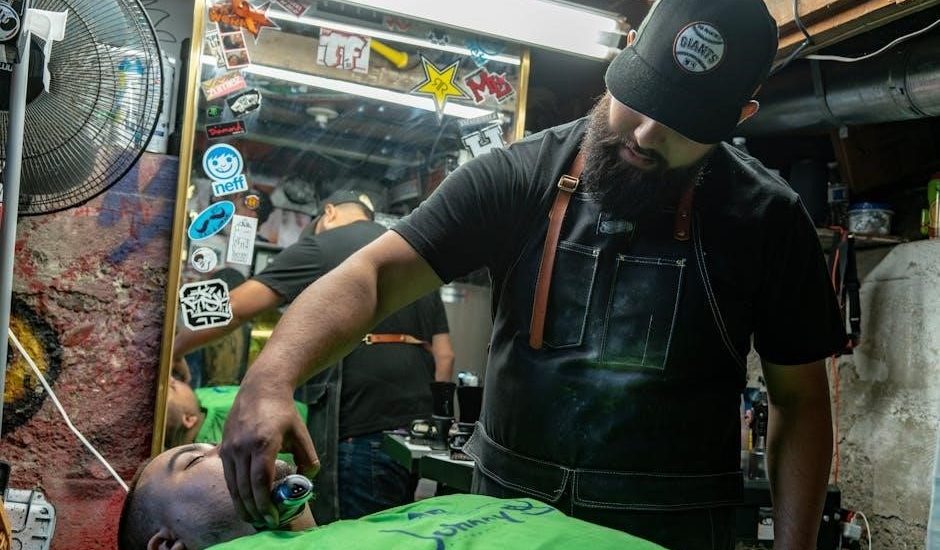Welcome to the Blanketrol 3 Service Manual, your comprehensive guide to understanding and maintaining the Cincinnati Sub-Zero Blanketrol 3 system․ This manual provides detailed instructions for setup, operation, troubleshooting, and maintenance to ensure optimal performance and patient safety․
Purpose and Importance in Medical Settings

The Blanketrol 3 is a critical medical device designed to manage patient temperature effectively, ensuring precise control during surgical procedures, recovery, and critical care․ Its purpose is to provide safe and reliable temperature regulation, which is essential for preventing complications such as hypothermia or hyperthermia․ In medical settings, the Blanketrol 3 plays a vital role in maintaining patient stability, particularly during long surgeries or when treating patients with sensitive thermal needs․ Its advanced features, such as Gradient Technology, allow for efficient heat transfer and consistent temperature maintenance․ Additionally, the device supports compliance with clinical protocols, making it an indispensable tool for healthcare professionals․ Regular servicing and adherence to the manual’s guidelines are crucial to uphold its performance and patient safety․ The Blanketrol 3 is widely used in hospitals and surgical centers, underscoring its importance in modern healthcare․
Overview of the Manual’s Content
The Blanketrol 3 Service Manual is a detailed resource designed to guide users through the operation, maintenance, and troubleshooting of the Cincinnati Sub-Zero Blanketrol 3 system․ The manual is structured to ensure ease of use, with clear instructions and technical specifications to help healthcare professionals and technicians optimize the device’s performance․ It covers essential topics such as system components, temperature control mechanisms, and safety protocols․ Additionally, the manual includes step-by-step procedures for setup, calibration, and routine maintenance to prevent malfunctions․ Troubleshooting sections provide solutions for common issues, while appendices offer technical data and references for further assistance․ The manual emphasizes adherence to safety standards and best practices, ensuring the Blanketrol 3 operates effectively in various medical environments․ By following the guidelines outlined in this manual, users can maximize the device’s lifespan and reliability, ultimately enhancing patient care․

Key Features of the Blanketrol 3
The Blanketrol 3 features advanced temperature control, gradient technology for precise monitoring, and a user-friendly interface․ Its compact design, durability, and safety features make it ideal for medical settings, ensuring reliable patient temperature management․
Technical Specifications and Components
The Blanketrol 3 is designed with precision engineering, featuring a robust control panel, high-accuracy temperature probes, and a reliable cooling/heating unit․ It operates within a temperature range of -10°C to 40°C, ensuring versatility for various medical applications․ The system includes a digital display for real-time monitoring, while its compact design integrates seamlessly into healthcare environments․ Key components like the gradient technology module and the reusable probe adapter cable enhance its functionality․ The unit is built with durable materials, ensuring long-term performance and patient safety․ Electrical requirements include a 100-240V AC input, making it compatible with global power standards․ The Blanketrol 3 also supports data export capabilities via USB, enabling detailed record-keeping and analysis․ Regular maintenance, as outlined in the manual, ensures optimal performance and extends the lifespan of the device․
Gradient Technology for Temperature Management
The Blanketrol 3 incorporates advanced gradient technology, enabling precise and uniform temperature distribution across the patient’s body․ This innovative feature ensures that the desired temperature is maintained consistently, minimizing thermal gradients and potential hotspots․ The system uses a combination of thermoelectric cooling and heating elements, regulated by sophisticated sensors, to achieve accurate temperature control․ Gradient technology allows for smooth transitions between cooling and heating modes, providing a comfortable and safe environment for patients․ This capability is particularly crucial in neonatal and critical care settings, where maintaining stable body temperature is vital for patient outcomes․ The technology also supports customizable temperature profiles, catering to individual patient needs, and integrates seamlessly with the unit’s intuitive control interface․ By leveraging gradient technology, the Blanketrol 3 sets a new standard in patient temperature management, offering both precision and reliability in clinical applications․

Operating the Blanketrol 3
Operating the Blanketrol 3 involves straightforward steps to ensure safe and effective temperature management․ The system features an intuitive interface for easy setup and initialization․ Temperature control and monitoring are seamlessly integrated, allowing healthcare professionals to maintain precise and consistent patient care․
Step-by-Step Setup and Initialization
Setting up the Blanketrol 3 begins with connecting the unit to a power source and ensuring all components are properly linked․ First, attach the temperature probe to the patient and connect it to the designated port on the device․ Next, power on the system and allow it to initialize․ The membrane control panel will guide you through the startup process, including selecting the desired temperature and mode of operation․ Once initialized, the system will begin monitoring and adjusting the temperature automatically․ It is crucial to follow the sequence carefully to ensure accurate and safe operation․ Always verify that the display shows the correct temperature readings before proceeding․ Proper initialization ensures optimal performance and patient safety․ Refer to the manual for detailed diagrams and troubleshooting tips if issues arise during setup․ This process is designed to be user-friendly while maintaining precision in temperature management․
Temperature Control and Monitoring Procedures
The Blanketrol 3 system is designed to provide precise temperature control and continuous monitoring for patient comfort and safety․ Once initialized, the unit automatically adjusts the temperature based on the set parameters, ensuring consistent and accurate thermal management․ The membrane control panel displays real-time temperature readings, allowing healthcare professionals to monitor the patient’s condition effortlessly․ The system also features alarms that activate if the temperature deviates from the set range, ensuring prompt intervention․ Regular checks of the temperature probe and connections are essential to maintain accuracy․ For optimal performance, the manual recommends calibrating the system periodically and verifying the integrity of all components․ By following these procedures, users can ensure reliable temperature control and monitoring, which are critical for patient care․ The Blanketrol 3’s advanced technology simplifies these processes, making it a valuable tool in medical settings․ Always refer to the manual for specific calibration and monitoring guidelines to guarantee precise operation․ This ensures the system functions at its best, providing safe and effective temperature management for patients․

Maintenance and Servicing
Regular maintenance ensures the Blanketrol 3 operates efficiently and safely․ Schedule routine inspections, clean components, and replace worn parts as specified in the manual to maintain optimal performance and extend lifespan;
Scheduled Maintenance Checks
Regular maintenance is crucial for ensuring the Blanketrol 3 operates safely and efficiently․ Schedule routine checks every 3 to 6 months, depending on usage․ Inspect the temperature sensors, fluid lines, and electrical connections for damage or wear․ Clean the exterior and interior components to prevent dust buildup․ Check the system’s fluid levels and ensure proper circulation․ Test the alarm functions to confirm they activate correctly during temperature deviations․ Replace any worn or damaged parts immediately to avoid malfunctions․ Refer to the manual for a detailed checklist and procedures․ Consistent maintenance extends the lifespan of the unit and ensures accurate temperature control․ Always follow the manufacturer’s guidelines for servicing to maintain warranty compliance and patient safety․
Repair and Replacement of Parts
Repairing or replacing parts on the Blanketrol 3 requires careful attention to detail to ensure system performance and safety․ Always refer to the official service manual for specific instructions and diagrams․ Identify faulty components by referencing the troubleshooting guide or error codes․ Use only genuine Cincinnati Sub-Zero replacement parts to maintain compatibility and warranty validity․ Common parts needing replacement include temperature sensors, fluid lines, and control panel components․ For complex repairs, such as circuit board replacements or fluid system overhauls, consult an authorized technician․ Before starting any repair, disconnect power to the unit and follow proper safety protocols․ Keep a record of all maintenance and repairs for future reference․ Regular replacement of worn parts prevents unexpected malfunctions and ensures consistent patient temperature management․ Properly dispose of any replaced parts according to local regulations and guidelines․

Troubleshooting Common Issues

The Blanketrol 3 Service Manual provides detailed guidance for identifying and resolving common issues, such as power failures, temperature inaccuracies, and control panel malfunctions․ Refer to the troubleshooting section for diagnostic steps and solutions to ensure optimal functionality and patient safety․
Power and Display Problems
Power and display issues are among the most common challenges when operating the Blanketrol 3․ If the unit fails to power on, check the electrical connections, ensure the power cord is securely plugged in, and verify that the outlet is functioning․ A faulty power cord or tripped circuit breaker could also be the cause․ For display malfunctions, such as a blank or unresponsive screen, restart the system or check for loose connections between the control panel and the main unit․ If the display is dim or flickering, it may indicate a failing backlight or improperly configured brightness settings․ Refer to the troubleshooting guide in the manual for step-by-step solutions, including resetting the system or replacing faulty components․ Addressing these issues promptly ensures uninterrupted operation and accurate temperature monitoring․ Always follow safety protocols when handling electrical components to avoid further complications․
Temperature Regulation Malfunctions
Temperature regulation malfunctions in the Blanketrol 3 can occur due to sensor inaccuracies, faulty heating or cooling elements, or issues with the gradient technology․ Symptoms may include inconsistent temperature readings, failure to reach the set temperature, or unexpected fluctuations․ To address these issues, first, ensure all probes are correctly connected and positioned․ Check for blockages in the water circulation system and verify that the temperature sensors are clean and free from damage․ If the unit is not maintaining the desired temperature, refer to the troubleshooting guide for steps to calibrate the system or replace faulty components․ Additionally, ensure that the gradient setting is appropriately configured for the patient’s needs․ If problems persist, consult the service manual for advanced diagnostic procedures or contact a certified technician․ Regular maintenance, as outlined in the manual, can help prevent such malfunctions and ensure reliable performance․ Always prioritize patient safety when resolving temperature-related issues․

Safety Precautions and Guidelines
Adhering to safety guidelines is crucial when operating the Blanketrol 3․ Always follow proper protocols to prevent patient injury, electrical hazards, and system damage․ Ensure all connections are secure and avoid unauthorized modifications․
Operating Safety Measures
Ensuring the safe operation of the Blanketrol 3 is paramount to prevent accidents and maintain patient safety․ Always follow the manufacturer’s guidelines and adhere to hospital protocols․ Proper training is essential before operating the device․ Regularly inspect the system for signs of wear or damage, and ensure all connections are secure․ Patient monitoring should be continuous, with close attention to temperature settings to avoid hypothermia or hyperthermia․ Avoid exposing the device to extreme temperatures or moisture, as this may compromise its functionality․ Use only authorized accessories and follow the recommended cleaning procedures to prevent contamination․ In case of unexpected behavior, disconnect the power supply and consult the troubleshooting section of this manual․ Never attempt to modify or repair the device without proper authorization and expertise․ By adhering to these safety measures, you can ensure reliable performance and minimize risks associated with the Blanketrol 3 system․
Emergency Procedures
In the event of an emergency involving the Blanketrol 3, prioritize patient safety and system integrity․ If the device fails to power on, immediately disconnect it from the power source and notify biomedical engineering․ For temperature regulation malfunctions, such as overheating or cooling failures, switch off the system and monitor the patient manually․ Ensure the patient’s temperature is stabilized using alternative methods until the issue is resolved․ If the display is unresponsive or erroneous readings occur, restart the device or replace the batteries if applicable․ Never attempt to repair the system during an emergency without proper training․ In cases of fluid leakage or electrical issues, disconnect the device and isolate it from the patient․ Always refer to the troubleshooting guide for specific instructions, but prioritize immediate action to safeguard the patient․ Emergency procedures should be practiced regularly to ensure swift and effective responses․ Patient well-being remains the top priority in any critical situation involving the Blanketrol 3 system․

Accessing the Service Manual
Access the Blanketrol 3 Service Manual online through Cincinnati Sub-Zero’s official website or authorized distributors․ Download the PDF manual from the support section or contact customer service for assistance․ Ensure you have the latest version for accurate information․

Online Resources and Downloads
The Blanketrol 3 Service Manual is readily available online through Cincinnati Sub-Zero’s official website․ Users can download the manual in PDF format, ensuring easy access to detailed instructions, diagrams, and troubleshooting guides․ The manual is comprehensive, covering installation, operation, and maintenance procedures․ Additionally, authorized distributors and medical equipment forums often provide downloadable versions, making it convenient for healthcare professionals to reference the guide; Regularly updated versions of the manual are released to reflect the latest technical advancements and user feedback․ It is essential to download the most recent edition to ensure compliance with safety protocols and optimal performance․ For added convenience, the manual can be saved to local devices or accessed via cloud storage for quick retrieval․ Online resources also include supplementary materials, such as user guides and technical notes, to support advanced troubleshooting and customization․ Always verify the authenticity of the source when downloading to avoid outdated or incorrect information․
Guidelines for Effective Use of the Manual
To effectively use the Blanketrol 3 Service Manual, it is crucial to thoroughly read and understand its contents before attempting any maintenance or operation․ Always begin by reviewing the safety precautions and technical specifications to ensure safe handling of the equipment․ Familiarize yourself with the manual’s structure, using the table of contents and index to quickly locate relevant sections․ Pay close attention to diagrams and illustrations, as they provide visual guidance for complex procedures․ When performing troubleshooting or repairs, follow the step-by-step instructions carefully to avoid further damage․ Regularly check for updates to the manual, as new information may be added to reflect software updates or improved maintenance practices․ For clarity, refer to the official Cincinnati Sub-Zero website or authorized distributors for the most accurate and up-to-date version of the manual․ If unsure about any procedure, consult a qualified technician or contact customer support for assistance․





